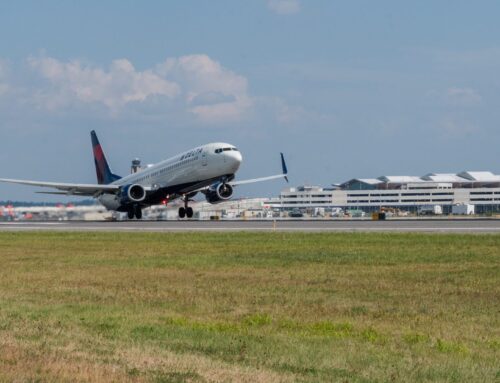CEO Viewpoint: Governance Structure Matters, Especially for Airports
ACAA celebrates 25 years this year, providing a governance structure positioned for success
By Christina Cassotis
Published August 19, 2024
Read Time: 3 mins

Editor’s Note: This story first ran in the Pittsburgh Business Times.
Twenty-five years ago, Allegheny County made a bold move.
That’s when county leaders chose business-style organization and agility over politics in how our region’s airports are run. The county went from having an aviation department as part of county government to creating an authority with a CEO reporting to a board of directors.
Allegheny County Airport Authority board members are nominated by the county executive and confirmed by county council. This is a partnership with county government and the community: We are given license to act in the public interest with an eye toward maximizing business opportunities in the region.
When the ACAA board of directors held their first meeting on July 29, 1999, they likely did not foresee the hard times that lay ahead for Pittsburgh International Airport: Five years later, US Airways – which would file for Chapter 11 bankruptcy twice in two years – pulled its hub out of PIT, leaving behind the unpaid debt that had financed construction of the airport in 1992.
Fast-forward to today. In June, we experienced our highest monthly passenger count since 2005, with more than 970,000 passengers traveling through PIT. Year-over-year passenger counts are up 14 percent, and many of our airlines are offering more seats than ever out of PIT.
The airport bottomed out in 2014 with 36 nonstop destinations. Today we are up to 62 nonstop destinations, with 171 daily departures, and ticket prices are down more than 30 percent. During the same period, operations at Allegheny County Airport have grown 20 percent.

Icelandair and British Airways aircraft parked on PIT’s Concourse C for flights to Reykjavik and London Heathrow on June 28, 2024. (Photo by Evan Dougherty)
Quite a comeback, thanks in no small part to our status as an authority rather than a governmental department. The authority model not only allows us to act like a business; it requires that we do. We are held accountable not only by our board, but also by our airline partners, who have a stake by funding the majority of airport operational budgets. Decisions can be made quickly and free of political influence.
That is what has allowed us to leverage 4,000 acres of developable land at PIT to generate additional revenue and drive economic growth for the region, such as Neighborhood 91, a global advanced manufacturing hub. That nonaeronautical revenue leads to lower costs for airlines, which makes the airlines appreciate us as a partner who respects their business and how well they can run.
The authority model allowed us to be aggressive in our air service recruitment strategy and is what gave PIT the agility to build a microgrid that provides 100 percent of the airport’s power, the first in the world to do that. It gave us the agility to open Presley’s Place, a room for travelers with autism and other sensory issues that has set a standard for airports nationwide. It is giving us the agility to form energy company partnerships with a goal to produce 150 million gallons of Sustainable Aviation Fuel on site at PIT, a major step toward decarbonizing the aviation industry.
And it is giving us the agility to build the new Pittsburgh International Airport, an airport befitting the thriving origin-and-destination airport we have become. It includes a new terminal, new parking garage and renovations to the airside terminal, including new restaurants and retail stores. We are building it without a dime of local or state tax dollars.
Good governance alone, however, is not the answer. The team that I have assembled at ACAA, the people, have made our success happen. Because we are an authority, we can compete aggressively for talent and draw from a wide pool, not just a single county or city. Operating as close as possible to a private business, we attract people who want to be innovators, and we give them a runway to succeed.
Ten years ago, I answered a recruiter’s call to interview as the CEO of the ACAA in part because the county’s foresight in creating the authority had positioned our airports for success. The rest is history.
Christina Cassotis is CEO of the Allegheny County Airport Authority.






